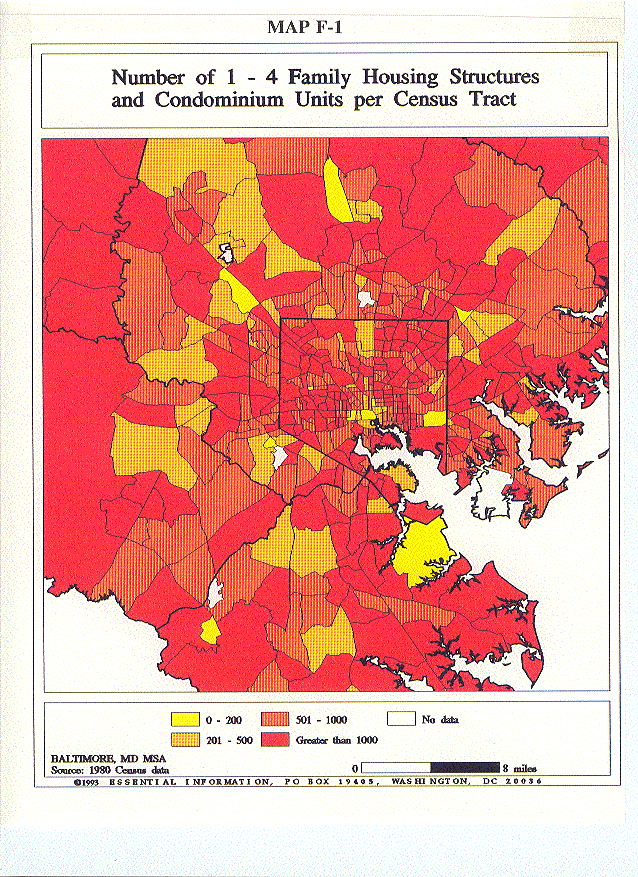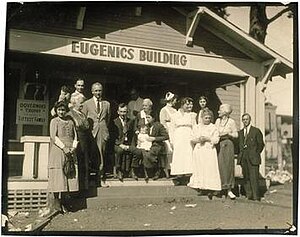
JAY: So when I drive around Baltimore now--and it still seems very much an apartheid city. There's certain areas that seem racially diverse (is the word people use), but by and large, you go into one neighborhood and you see mostly black people, and you go into another and you see almost all white people. So is that true? Is that still the case?
PIETILA: Well, that is true, but it is also true about many other American cities. Hyper-segregation in residential neighborhoods is a standard rather than exception.
JAY: So you dug into how that took place in Baltimore, 'cause it's not just by chance or just by sort of some vague ideological or cultural reasons. There was some real planning behind all of this. Tell us the story, how we got to an apartheid Baltimore.
PIETILA: Well, in a very peculiar way, Baltimore became a laboratory for residential segregation. Baltimore in 1910 was the first American city that enacted a city council law requiring that its residential neighborhood be segregated. About 40 other cities copied Baltimore's law, mostly in the old confederacy. And then, in 1917, the Supreme Court said this approach is a wrong one. By that time, restrictive covenants had become the standard--homeowners joining together and saying there are certain people we don't want as our neighbors. They concluded a legally binding agreement. And that is how residential segregation was handled in most American cities.
JAY: And the binding agreement is you agree not to sell your house to someone who isn't white.

PIETILA: That's correct, or Jewish, or--.
JAY: But that's the other thing about your research is that this was about Jews. It wasn't just about blacks.
PIETILA: Absolutely. And all this kind of tied together to what then was the prevailing social philosophy, eugenics, which classified certain races and nationalities as better than some other ones.
JAY: One of the real estate developers you quote in your book is talking about it's okay to have a black neighborhood, it's okay to have a white neighborhood, it's okay to have a Jewish one; just never the--should--I don't know what--it's not Twain [incompr.] And so it was quite overt and quite deliberate.
PIETILA: It was quite deliberate. And homeowners subscribe to these kinds of agreements. And once you signed it, then the next buyer would have to sign the same covenant. And the real estate industry basically honored these covenants. And many of the real estate boards, not only in Baltimore but in other cities, actually thought that it was illegal, against their own guidelines and bylaws, to bring in inharmonious elements, as the [crosstalk]
JAY: So it's against the bylaws to break the covenants.
PIETILA: That's right, and for real estate brokers to sell houses to people who were seen as inharmonious.

JAY: Now, this starts to change. And I don't know if I'm jumping ahead, but I think that at some point, some especially white working class areas, it starts to change. And how does that happen, and why?
PIETILA: Well, the big change comes, and it does not come instantly, but the big change comes in 1948, when the Supreme Court rules that covenants are unconstitutional. Covenants, per se, if we want to pass a covenant against dogs running in our neighborhoods, that's fine. If you want to bar from your neighborhood a Finn, like myself, you can do it. What you cannot do under the Supreme Court ruling is you cannot ask a court to enforce that covenant. And so this was--the big change in 1948 was that these covenants no longer could be enforced.
JAY: So it requires voluntary participation. But that was still okay after that Supreme Court decision. As long as everybody agreed to do it, it was still okay.
PIETILA: Well, I cite a startling--to me, a startling observation that even in the early 1970s, a couple of years after I first came to Baltimore, there were actually two separate multiple lists in Baltimore. There was the real estate board's multiple list that listed neighborhoods in white areas, and then there was a separate multiple list that listed properties in suburban areas that accepted Jews.
JAY: And was there a list for black areas as a separate [crosstalk]
PIETILA: Well, I mean, there was no need to have that kind of a list, because--.
JAY: 'Cause white people wouldn't move into those areas.
PIETILA: White people would not move in there, and blockbusting was expanding areas that were open to blacks. And so there really wasn't any need at that point.

JAY: Now, in your book, you talk about the role of local newspapers in kind of creating the environment that kind of facilitated all this. Can you speak about that?
PIETILA: Well, my former employer, The Baltimore Sun, when I first came to Baltimore, joining The Sun in 1969, still listed properties according to race: houses white, houses colored.
JAY: This is in '69, even--this is after the Fair Housing Act.
PIETILA: Sixty-nine.
JAY: Sixty-eight's the Fair Housing Act.

PIETILA: Sixty-nine. And then there were also--and this practice was on the wane by that time, but there was still an occasional ad that said "restricted". And everybody knew what "restricted" meant: no Jews, no blacks.
JAY: So talk a little bit more about the role of the papers in giving people the sense that they had to protect all of this because otherwise the real estate values would go down. You speak about how the papers fed this whole idea. Was that a bit of a self-fulfilling prophecy in some sense?
PIETILA: Well, the papers fed it. And it's kind of interesting. When I was researching the book and asking about this policy, some of the old-time executives told me that the classifications persisted as long as they did because the buyers, the market, wanted it that way.
JAY: But is it just a question of classifications? 'Cause I think you refer to some articles from The Sun where they would do sort of analysis showing how property values would collapse if even one black person moved into a neighborhood. I mean, how much is the press helping cause this, rather than just reporting on it?

PIETILA: You asked about pricing. Why did property values go down? Well, property values went down because until the 1960s, late 1960s, there was little or no conventional financing available to black buyers. So if you were living in a white neighborhood, you wanted to sell your house, unless you finance that sale, you could not do it in a free market situation. So the only recourse for you, because the black buyer could not get financing, was to use a middle man, known as a blockbuster, who would give a pittance to you for that house and then flip it and sell it onward to a black buyer. And these blockbusters, the reason why they were able to do this was that in a market where there was no conventional financing available, they had investors who would provide 100 percent financing to the black buyer.
JAY: Okay. So in the next segment of our interview, let's dig into blockbusting. And this is where white working class neighborhoods are deliberately--black families are moved in deliberately by real estate speculators who want to first drive down prices and then drive them up again. And we'll dig into all that in the second part of our interview series on The Real News Network.
How Bigotry Shaped Baltimore
How Bigotry Shaped Baltimore
Federal Government and Bigotry in Baltimore

No comments:
Post a Comment